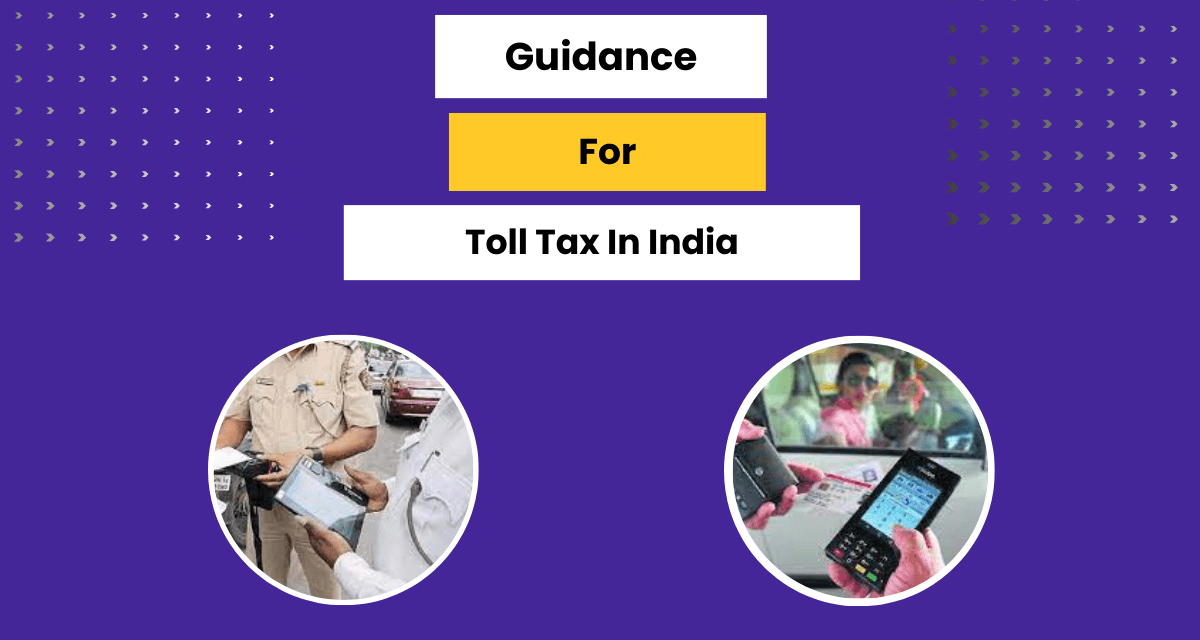

A toll tax can be defined as the charge that vehicle drivers have to pay while crossing interstate expressways, highways, tunnels, bridges, etc. The roads where toll tax is applicable are deemed toll tax roads and are under the purview of the National Highway Authority of India (NHAI). The counters where toll tax is collected are known as toll plazas, are an amalgamation of several toll booths. Thus, in laypersons terms, we can understand the toll tax is the payment one gives to the Indian Government in order to use Expressways or Highways.
The money collected through toll tax is used to sponsor the construction of roads, highways, Expressways and improve inter-state connectivity. The total toll tax amount that a vehicles driver has to pay depends upon several factors such as distance of the commute, vehicle type, and so forth. The toll tax collecting centres that is, the toll booths are located at a distance of 60 kilometres from one another and have a continuous stretch; when one toll road ends, another begins. Now that we have briefly touched upon the basics of toll tax, let us understand its details.
To begin with, toll tax is an indirect tax that is levied on goods and individuals.
The uses of toll tax are to build new roads and maintain the older ones by state-sponsored authorities.
Collection of toll tax occurs at toll booths that provide receipts for payment.
Toll tax generates revenue that the NHAI distributes among several private parties or contractors responsible for maintaining one particular stretch of roads.
Private parties tasked with maintaining a toll plaza have to look after drinking water, fire safety, sanitation, toilets, and other miscellaneous requirements.
The toll tax amounts are not uniform and vary as per the size of the vehicle and the carriage weight of the vehicle. The purpose of the vehicle whether it is for commercial or personal use is also taken into account while calculating the toll tax.
The NHAI considers the damage done to a road by heavy vehicles while determining the toll tax. Thus, the load capacity plays a crucial role in gauging a toll tax. The size of the vehicle also determines the Passenger Car Unit upon which toll tax is determined.
Due to the reasons mentioned above, toll tax is not applicable for two-wheelers and pedestrians who might be crossing an Inter- State Expressway. As per the mandates of the Indian Government, vehicles with a PCU capacity of less than one person are exempt from paying toll taxes, and two-wheelers like bikes fall under the said category.
Many people often interchange toll tax with road tax and vice versa. Both of them have significant differences. Toll tax is levied only on specific toll roads like National and State Highways, Expressways, and more for constructing and maintaining the roadways of India. Toll tax is applicable on all the roads under the purview of the NHAI.
On the contrary, road tax is for roads under State Government mandates. Unlike toll tax, which is solely applicable for four-wheelers and larger vehicles, road tax applies to vehicle owners. However, it is noteworthy to mention that road tax is a one-time tax.
Vehicles
Time
Tollbooth service personnel must ensure that the time taken per vehicle through the toll lane is not more than six seconds during peak hours.
Toll Lanes
Toll lanes have to be raised in case the maximum waiting for a vehicle exceeds two minutes.
Since 2017, the manual payment of toll tax at toll plazas has reduced considerably due to the ushering in of FASTag. In simple words, we can understand FASTag as an electronic toll tax collection system. They were introduced by the National Highway Authority of India in late 2017 and became mandatory for new four-wheeler vehicles from 2019 onwards. FASTags utilized the RFID or Radio Frequency Identification Technology for the cashless transaction of toll tax payments. Currently, 22 private and public sector banks like Syndicate Bank, State Bank of India, Axis Bank, and others operate FASTags in conjunction with the National Payments Corporation of India or NCPI.
The onset of FASTags as an automotive instrument for toll tax has, undoubtedly, revolutionized interstate and long-distance road travel in India. FASTags save a lot of time, energy, and money for individual drivers and have played a significant role in bolstering the Digital India mission of the country. FASTags are good for the environment and have social benefits, such as less traffic congestion, lesser disruption along toll lanes, and so forth.